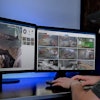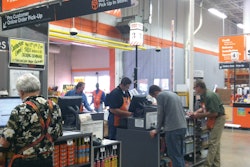
Freedigitalphotos.net
Keeping a crew safe on a jobsite presents unique challenges when the mercury creeps above 90 degrees. Heat stress is increasingly being recognized for contributing to the rapid onset of fatigue, distraction, inattention to details and other deficiencies.
Rule No. 1 is to maintain proper hydration. This sounds logical, but there are practical challenges.
Here are some bedrock tips to share at your summer safety meeting.
- Hydrate. Water is arguably the best hydrating beverage, but it’s tasteless and boring. Enter the electrolytic beverages: Gatorade, Squincher, etc. Even a slice of lemon will add some taste to a cooler. These additives make plain old water more drinkable, and they also supply electrolytes to the body – sort of like what a low dose of battery acid does to a wet cell battery. The body loves it. In the old days, salt tablets were distributed, although this practice has been proven outdated. We typically eat enough junk food to replace salt lost through perspiration.
- Avoid designer beverages (Red Bull etc.) because they offer minimal hydration. And avoid carbonated sodas and sugary concoctions. Iced tea is on the borderline, and anything with caffeine is a diuretic and should be avoided. Lemonade, and most citrus beverages are fine, but it’s a good idea to cut them with 50% water. Try also to cut down on cigarettes. In high heat they make it harder to respirate oxygen to where it needs to go.
- Select your lunch carefully. Junk food is high in fat and preservative, and it’s going to put a high caloric load on your digestive system. In high heat, that will stress the body. Try eating a bigger breakfast, so you’re not ravenous at lunch, and light lunches, such as fruit and vegetable salads (skip the fries).
- Pay attention to Circadian Rhythms. The body's internal clock that governs our sleep-wake cycle programs most humans for the day shift. But a blip on the chart called the "Post Lunch Dip" puts most humans in the mood to nap after lunch. Siesta cultures acknowledge the drop in productivity and safety every day, when the whole country basically shuts down for a nap during the hottest hours. Eating a light lunch can help minimize the afternoon slump. Conversely, bulking up at lunch can make it more pronounced. If you’re running a motor grader or a working around a paving machine, we need alertness.
- Schedule for cooler work. In extreme heat (ninety degrees and above), consider rescheduling to work in cooler parts of the day. Can this job be done at night, or can you modify a shift for earlier morning starts? Supervisors should watch more closely for indicators of fatigue and call for breaks more frequently. Going in and out of air conditioned spaces can be tricky. Change out of soaked shirts when in the AC.
- Bring shade. Whenever possible, configure work in shaded areas, and use canopies or umbrellas to avoid direct sun exposures, even if only for intermittent protection. Some shade is better than none. Provide heavy duty sun-block for crew members with sensitive skin. Switch to wide-brim hard hats. MSA actually makes a lightweight visor for their wide brim hats that offers a lot of protection. Full sleeves, nape protectors, vented hard hats and cooling vests and bandanas are also on the market. Try a variety of clothing and devices and provide whatever the crew seems to like. Talk with your safety hardware vendor.
- Check with your uniform supplier. Shirts should be lighter color to reflect sun, and fabric should contain as much cotton as possible. Typical uniform shirts are mostly polyester, because they don’t wear out as quickly, but they don’t breathe as well. Look for new garments with engineered fabrics that actually provide a cooling effect when they absorb sweat. They are mostly found in high-end recreational and outdoor apparel stores and can be a little pricey, but they might be worth trying out with your Safety Committee. As a rule, bare-back, tank tops and other forms of designer fashion wear are not effective and should not be permitted. Sun protection is not a beauty contest.
- Keep an eye on one another, and be alert for signs of heat exhaustion. They need to know that strange behavior may be a sign of heat-related illness and to take some early steps to intervene. Early symptoms include lethargy, disorientation, stumbling, dropping tools, slurred speech or unresponsiveness. You can’t have this happen around moving machinery, so it’s serious stuff to manage.
- Basic first aid for heat exposure includes having the person lie down in the shade or a cooler area with feet elevated above the heart. This allows blood to flow to the brain more easily and decreases cardio loading. Remove work boots. Get some fans going to lower body temperature and provide evaporative cooling. In case of unconsciousness, call 911.
- The usual progression of heat illness is heat exhaustion to heat cramps followed by heat stroke. Heat stroke can be deadly for some folks, such as people who are already dehydrated. It’s also avoidable if we manage the hot weather as well as the rest of our jobs.
CDC Resource: Tips for Staying Cool in the Summer Heat
OSHA Resource: Preventing Occupational Heat Exposure
OSHA Resource: First Aid for Heat-Related Illness



















